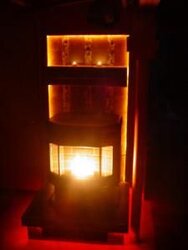I was considering installing an oak on my empress, while looking at the back of it recently... It appears to just mount onto the outside of the back outside wall of the stove.
Is this the normal setup, in essence connecting the outside air source just to the stove back?
The manual does not really specify much detail about it, related to the stove connections itself. So perhaps it is that simple and there is nothing else that needs connecting inside the stove unit?
Do people install dampeners of the air intake so that it can be closed off during times when the stove is not running?
Is this the normal setup, in essence connecting the outside air source just to the stove back?
The manual does not really specify much detail about it, related to the stove connections itself. So perhaps it is that simple and there is nothing else that needs connecting inside the stove unit?
Do people install dampeners of the air intake so that it can be closed off during times when the stove is not running?



